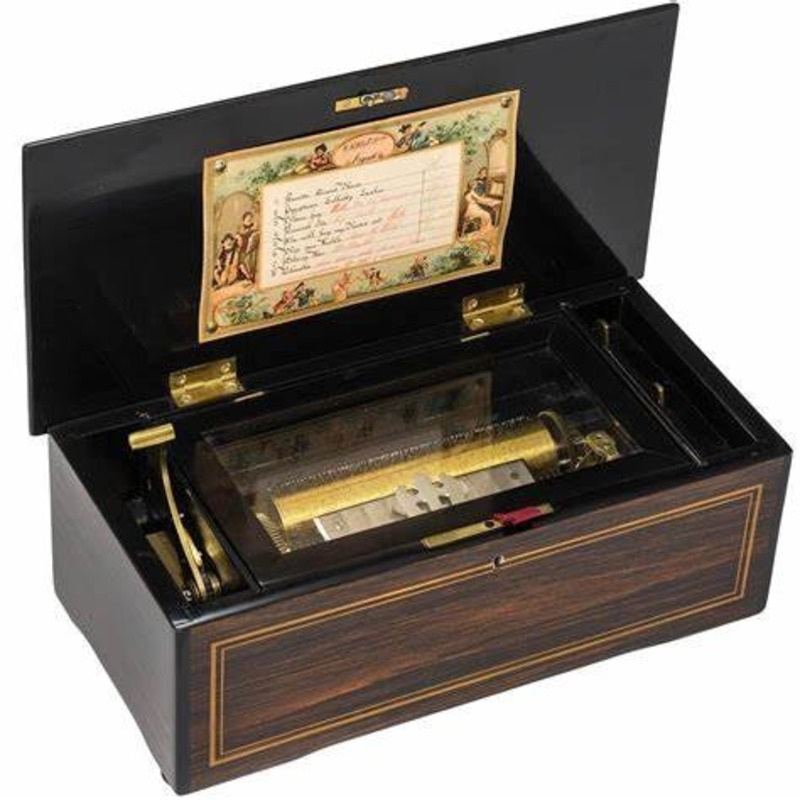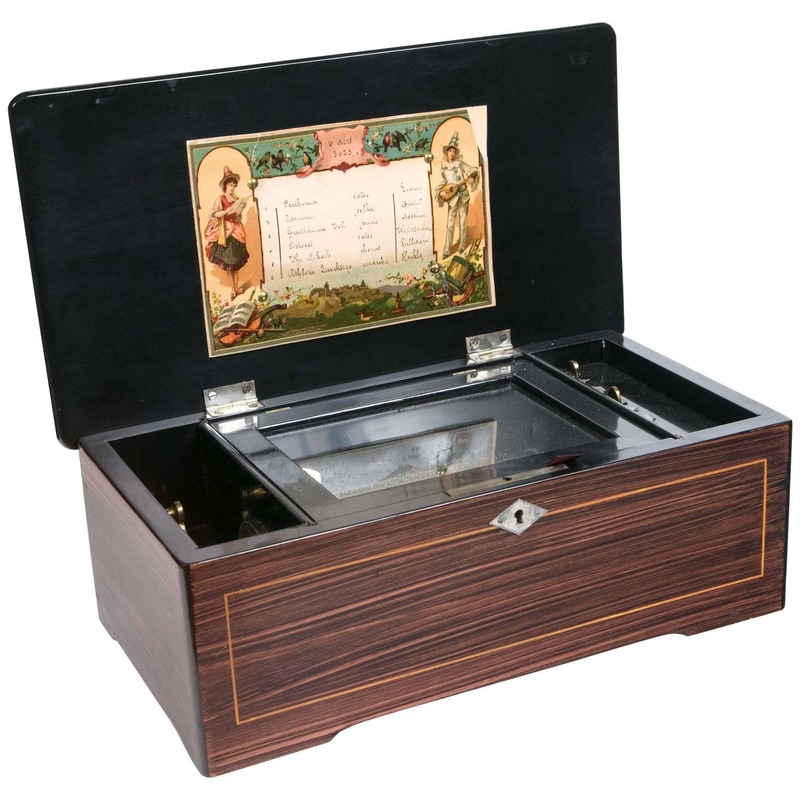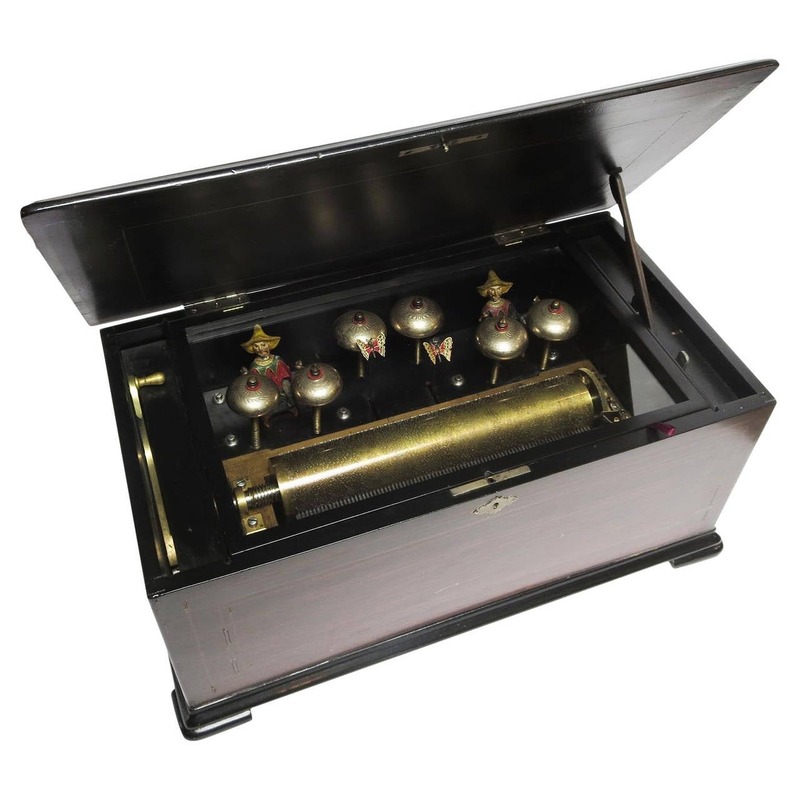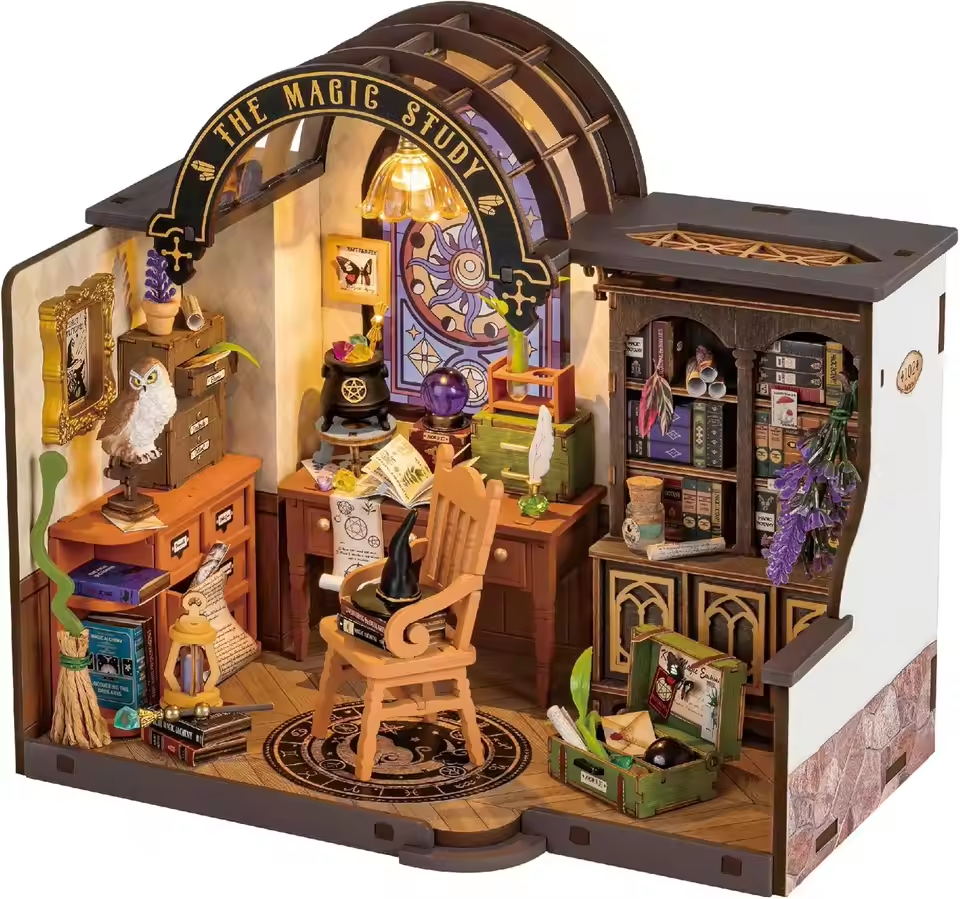The History of Swiss Music Boxes
The Swiss music box has a rich history. It dates back to the 18th century. Craftsmen in Switzerland created the first music boxes as ornamental items. They aimed to showcase the precision and skill of Swiss watchmakers. By the 19th century, Swiss music boxes gained popularity across Europe. They carried the fame of Swiss innovation. Soon, music boxes were not just decorative. They became entertainment pieces in homes.
Towns like Sainte-Croix became centers for music box production. Here, artisans honed their craft and contributed to the music box evolution. The peak of their popularity was during the late 1800s. During this time, inventors added features like interchangeable cylinders. This allowed for a variety of tunes to play from a single music box.
However, with the invention of the phonograph, the music box industry faced a decline. This new device could play recorded music and was less expensive. But the charm of the Swiss music box endured. Enthusiasts and collectors appreciated them for their craftsmanship and mechanical ingenuity.
Today, the tradition of making and enjoying Swiss music boxes continues. They represent a piece of cultural heritage. They remind us of a time when music was a precious commodity. Swiss music boxes are not just historical artifacts. They are also treasured for the emotional connection they can create through their timeless melodies.
How Swiss Music Boxes Work
Swiss music boxes mesmerize with their mechanical precision. At their heart lies a finely tuned mechanism. This mechanism plays the box’s melody. Here is a simplified breakdown of how they work:
- Pin Cylinder: The core of the music box is its pin cylinder. Craftsmen embed metal pins in a pattern on the cylinder. This pattern matches the desired tune. As the cylinder rotates, the pins pluck the teeth of a steel comb. Each tooth is different in size, creating distinct notes.
- Spring Motor: A wound spring powers the cylinder. One tightens it with a key. This stores energy in the spring. Upon release, it rotates the cylinder at a steady pace. Consistent rotation is crucial for smooth melody playing.
- Steel Comb: The comb has many teeth, each cut to a precise length. They vibrate when plucked by the cylinder pins. The length and thickness of the teeth determine the pitch. Shorter teeth produce higher notes, while longer teeth make lower ones.
- Resonator Box: This wooden box amplifies the sound. The vibrations from the comb transfer to the wood. This resonates the sound, making it richer and louder.
- Flywheel: A flywheel maintains the tempo. It acts like a regulator, ensuring the music plays at a consistent speed. Without it, the melody may rush or slow erratically.
From turning the key to hearing the sweet melody, each step showcases Swiss precision. The Swiss music box does not just produce music. It is a dance of crafted parts working together harmoniously. These boxes remind us that beauty often lies in simplicity and methodical design.

The Art of Crafting Swiss Music Boxes
Crafting a Swiss music box is an art form. It requires a blend of traditional skills and precise workmanship. The process begins with selecting high-quality materials. Artisans choose woods that enhance the sound and aesthetics of the music box. The most common types are spruce and walnut. These woods have resonant qualities. They amplify the music beautifully.
Next, craftsmen meticulously carve and shape the wood into the resonator box. This forms the base of the music box. Artists may add intricate designs and decorations to the exterior. This adds to the box’s charm and uniqueness. The wooden cases often bear motifs of Swiss landscapes. They can also have floral patterns or other traditional symbols.
The pin cylinder, the music box’s heart, demands special attention. Craftsmen place metal pins in precise arrangements. This creates the distinct tune of each box. They use tools with steady hands to ensure accuracy. The pins must be perfectly positioned. Even a slight misalignment can change the melody.
The steel comb, crucial for note production, gets cut and tuned by hand. Each tooth must resonate at the exact pitch when struck by the cylinder pins. It is an exercise in precision engineering.
Assembly of these components is delicate work. Craftsmen carefully integrate the spring motor, flywheel, and other parts. They ensure everything functions in unison. This guarantees the music plays smoothly. Lastly, they polish and finish the music box. This makes it ready for music lovers to enjoy.
The crafting process of Swiss music boxes is a testament to the dedication of its makers. Each box carries the legacy of Swiss artisanship. The process is as enchanting as the melodies they play. Swiss music boxes are not just musical instruments. They are handmade masterpieces that embody the spirit of Switzerland’s craftsmanship.
Types of Swiss Music Boxes
Swiss music boxes come in various types and styles. Each type offers unique features and melodies, appealing to a diverse range of preferences and collectors. Below are some main categories:
- Classic Cylinder Boxes: These are the traditional music boxes that many envision. They have a rotating cylinder with pins that pluck the comb’s teeth.
- Orchestral Boxes: More complex than classic boxes. These music boxes replicate an orchestra with different instruments.
- Interchangeable Cylinder Boxes: These allow changing cylinders to play different tunes. They were an innovation of the 19th century.
- Polyphon Boxes: Polyphons use a large metal disc instead of a cylinder. The disc rotates to create music, providing a unique sound.
- Snuffboxes: These small, portable music boxes were popular in the past. They often come with intricate designs and function as personal entertainment.
There are also modern versions of Swiss music boxes. They merge traditional craftsmanship with contemporary design. No matter the type, all Swiss music boxes share the hallmark of quality and artistry.
Collectors value each type for its historical significance and musical charm. Whether you prefer the rich sounds of an orchestral box or the simplicity of a classic cylinder, Swiss music boxes offer something for everyone.

The Significance of Swiss Music Boxes in Culture
Swiss music boxes hold a special place in cultural history. These intricately designed music players are more than just antiques. They echo the days when music was a rare and crafted treasure. Here’s what makes them culturally significant:
- Symbol of Swiss Heritage: Swiss music boxes are icons of the country’s craftsmanship. They reflect the precision that Switzerland is famous for, especially in watchmaking.
- Preservation of Artistry: They stand as a testament to the traditional skills of artisans. They are a reminder of an era when every note and melody was handcrafted.
- Emotional Resonance: Through their melodies, they connect us to the past. They evoke emotions and memories, bridging generations.
- Innovation Marker: The evolution of music boxes shows the Swiss contribution to music history. They pioneered interchangeable cylinders, adding versatility to music enjoyment.
- Collector’s Joy: Enthusiasts around the world collect Swiss music boxes. They treasure them for their historical value and unique music.
When we think of Swiss music boxes, we think of the culture they carry within. Whether found in museums or private collections, they are loved for the stories they tell. They are more than just objects; they capture the essence of a musical tradition. Swiss music boxes enrich our cultural tapestry with their timeless appeal.
Famous Swiss Music Box Makers and Brands
Switzerland has been home to many famous music box makers and brands over the years. These creators have become synonymous with quality and are renowned for their enduring legacy of craftsmanship. Notable among them are:
- Reuge: Since 1865, Reuge has been a leader in the industry. This brand is known for its exquisite designs and the quality of sound of its music boxes. Collectors highly seek after these pieces for their innovative features and artistic beauty.
- B?hme Music: Another mark of Swiss excellence, B?hme Music is respected for preserving the art of traditional music box making. They manufacture classic and complex pieces that are cherished around the world.
- Jobin: The Jobin brand stands as a pillar of Swiss music box heritage. They are known for handcrafted pieces that showcase the intricate woodworking and mechanical precision characteristic of Swiss artisanship.
- Lador: A name often associated with Swiss musical tradition, Lador offers a range of music boxes that captivate with their melodious tunes and detailed craftsmanship.
- Cuendet: Cuendet’s music boxes often feature Swiss folk tunes and are prized for their rustic charm and authentic sound.
Each of these brands has contributed significantly to the Swiss music box narrative. They have earned esteemed reputations by producing pieces that not only play melodies but also celebrate Swiss culture. Collectors and enthusiasts continue to admire and seek out these brands for their top-tier artistry and musical elegance. Swiss music boxes from these makers are more than just items; they are keepsakes that carry the heart of Switzerland’s musical and artisanal tradition.

Collecting Swiss Music Boxes
Collecting Swiss music boxes is a fulfilling hobby for many enthusiasts. The pursuit involves an appreciation for history, artistry, and fine mechanics. Here’s a guide to beginning your own Swiss music box collection:
- Start with Research: Learn about different music box types and their characteristics. Identify the eras and styles you are most drawn to.
- Set a Budget: Decide on how much you want to spend. Swiss music boxes can range from affordable to high-end antiques.
- Seek Trusted Sellers: Buy from reputable dealers or auction houses. Look for sellers that specialize in music boxes or antiques.
- Check Condition: Examine boxes for damage or wear. Ensure that the musical mechanism works smoothly and sounds clear.
- Look for Authenticity: Original Swiss music boxes have a maker’s mark or brand. This proves authenticity and helps with valuation.
- Learn Maintenance: Understand how to care for your music boxes. Proper care is essential to preserve their condition.
- Join Communities: Connect with other collectors. Online forums and local clubs can provide advice and opportunities to acquire new pieces.
- Document Your Collection: Keep records of your music boxes. Note their condition, maker, and any historical significance.
By following these steps, you can start building a diverse collection of Swiss music boxes. Each addition will not just expand your collection but bring stories and melodies that enrich your life.
Swiss Music Boxes as Gifts and Souvenirs
Swiss music boxes make ideal gifts and souvenirs. People cherish these items for several reasons:
- Memorable Keepsakes: They capture the essence of Swiss culture in a tangible form. When gifted, they become treasured keepsakes that carry sentimental value and the spirit of Switzerland.
- Craftsmanship Appreciation: To give a Swiss music box is to appreciate the artistry and attention to detail that goes into their creation. They embody a long-standing tradition of precision and beauty.
- Musical Joy: These boxes are not just collectibles; they provide the joy of music. Each box plays a unique tune that can evoke fond memories or transport the listener to another time and place.
- Decorative Elegance: With their classic and sometimes intricate designs, Swiss music boxes are also beautiful objects of decoration. They often become conversation pieces in a home or office.
- Personalization Options: Many Swiss music box makers offer customization. This means you can choose a melody or design that holds special meaning for the recipient.
Finding the perfect Swiss music box as a gift or souvenir involves selecting the right melody and design that resonates with the person you’re thinking of. When you do, you give more than an item; you offer a timeless piece of melodic art that may be cherished and passed down for generations.
In gift shops across Switzerland, you can find a variety of music boxes, from small trinket sizes to larger, more elaborate pieces. Tourists often pick these up as mementos of their travels, while others purchase them online from Swiss retailers to deliver a piece of Swiss heritage to friends and family afar. Whether for a special occasion or just to show someone you care, a Swiss music box is a gift that speaks volumes of thoughtfulness and refinement.





